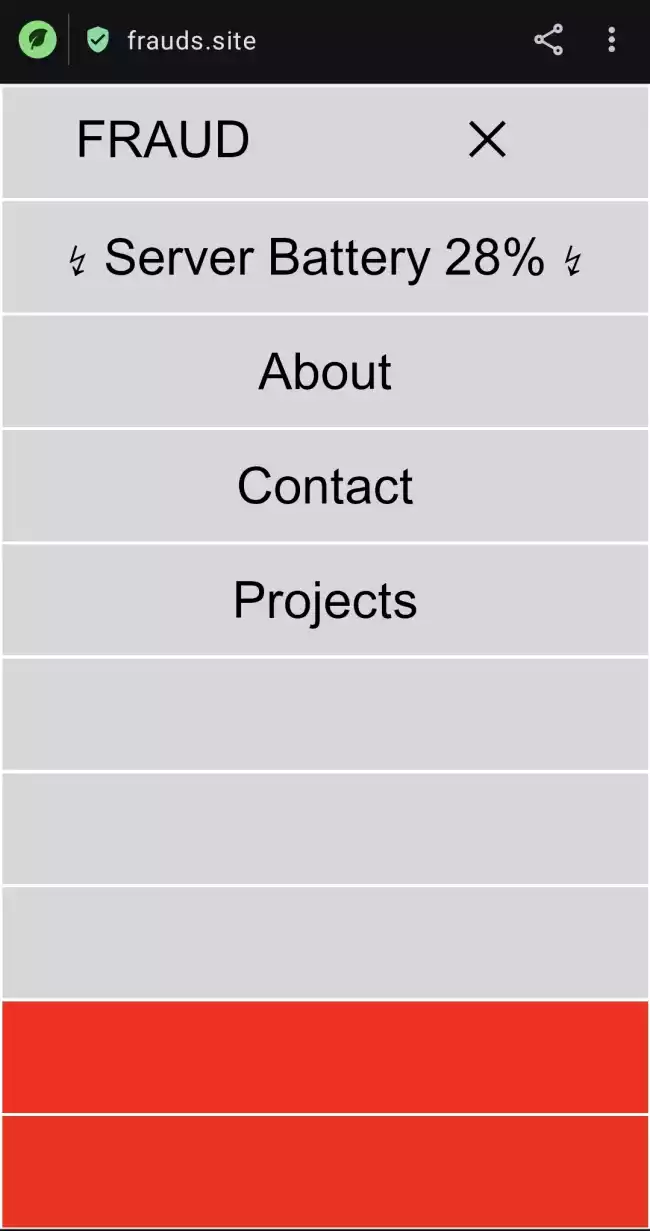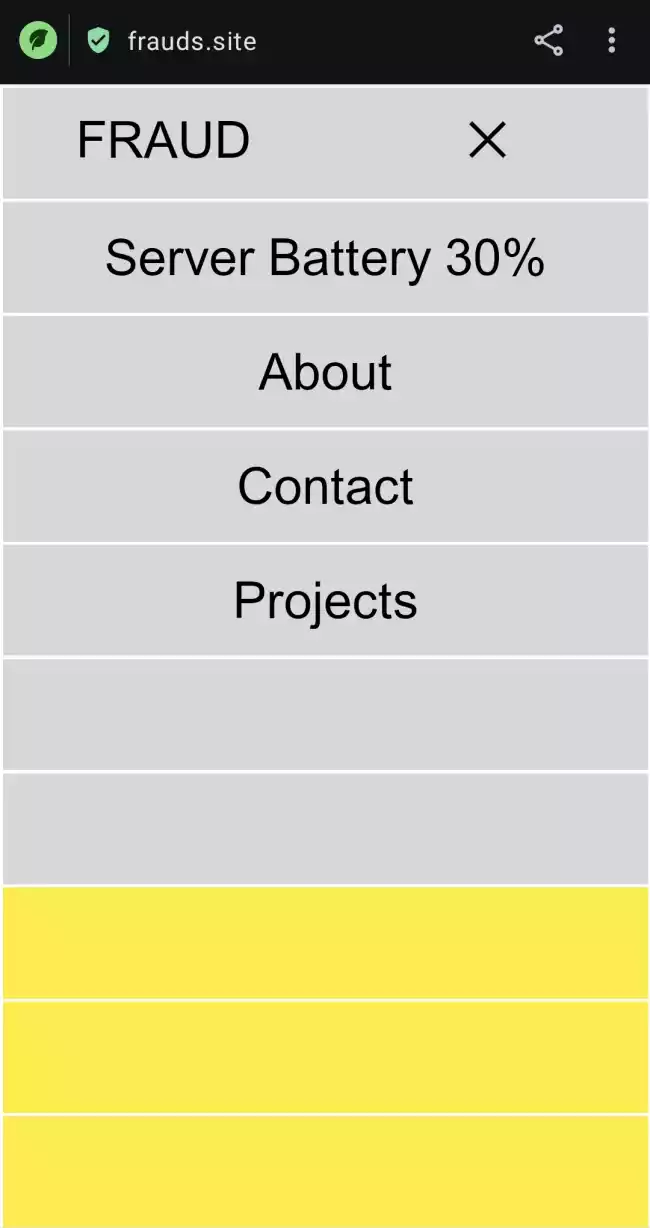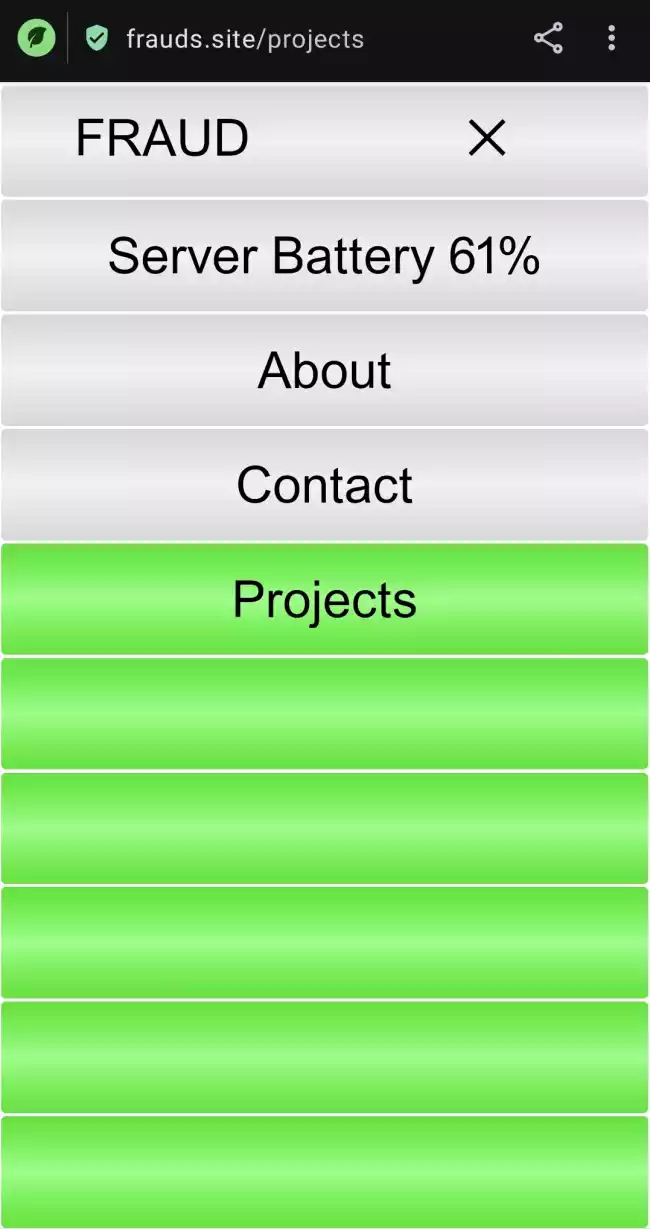FRAUD.server
What might the WWW look like if it celebrated our planetary affordances rather than accelerate towards exhaustion and collapse? Would it be always on? Would it power down at night, or during calm days? Would packet transfers follow ocean currents? What if we imagined technologies that could be sustained 1000 years into the future, like plants, who metabolise through solar energy (without the critical minerals required in solar panels)?
This website is hosted by a server of FRAUD's own (current version.001), charged with solar power that is stored in a Lithium Iron Phosphate battery. During extended bad weather or malfunction, the server's energy consumption reverts to the grid. The site's appearance follows the battery's charge:
red: 0-29% 🪫
yellow: 30-49%
green: 50-100% 🔋
The site's resolution, such as image width, is also dependent upon the energy available. For example videos only load if the battery has more than 40% charge.
It is an effort to think through what a more just energy and data provision might represent on an otherwise seemingly 'continually accessible' WWW.
A server is not just a server.
A server is more than a physical repository of data, it sits within a network of connections which allows for transnational communication. It is often also 'virtualised', or made immaterial through metaphors like the cloud. Cloud computing not only relies on immense amounts of energy consumption, hardware, critical raw materials and invisible labour, it also largely occurs under the auspices of the likes of Amazon, which ultimately seek to maintain centralised and unequal power structures. In short, a server is not just a server. To host one's data and experiment with the reformulation of those infrastructures is a radical proposal of critical interdependence.
During Artangel's Making Time programme, FRAUD built a server prototype for its web presence and file sharing using a solar powered Raspberry Pi (tiny computer). Fully aware of the problematic nature of solar (and the conflict materials it depends upon), these are the first steps towards making visible our digital footprints and developing more just modes of art labour. We are currently drawing up the network of minerals upon which our solar panel is dependent - which we will include here.
Why use solar? A solar landfill presage.
Contemporaneously, solar technologies are dropping radically in price. Viewed as less profitable due to its devaluation, finance capital is divesting in solar. So much so that bankruptcies are ensuing. Simultaneously (and not unrelated) there is a glut in solar panel production. Part of FRAUD.server's intent is to think through what we might do with all this soon to be "worthless" technology.
FRAUD.server exists in a continuum of low-tech and low-fi art projects and networks of solidarity. We originally got a 'how-to' from Anne Pasek, whose manual was building upon the work of Tega Brain. Alex Nathanson, Benedetta Piantella and of course by Low Tech Magazine's solar web design. And on it goes. We will soon put our version.001 'how-to' online too. Break it, re-build it, share it.
Stay tuned for FRAUD's prototype version.002.


